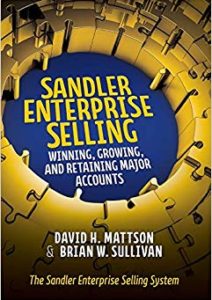Enterprise Selling: The Difference Between Owning a Cat and Herding Cats
Herding Cats
Winning, growing, and keeping enterprise accounts presents complexities far beyond those offered by small and medium-sized accounts. Unique challenges, such as vast, diverse buyer networks, long sales cycles, and the significant investments that accompany enterprise pursuits create problems we don’t encounter in other selling environments.
The difference between selling to small and medium-sized firms and selling to enterprise accounts is similar to the difference between owning a cat and herding cats! Let’s be frank. And, to address those unique challenges of the enterprise world, you need to engage all of your assets in the selling process. Team selling needs to be more than just a tagline. It needs to be the way you do business.
That means multiple organizational functions need to engage in the selling process. Winning and growing business is everybody’s job. Marshaling all the organization’s assets together to drive wins and expand accounts requires cross-functional collaboration. Functions such as Legal, Finance, Marketing and others partner with the direct selling team to make this happen. But, even with a strong cultural commitment to team selling, the execution can be a struggle. The people hopping on the team selling bus represent not only different organizational functions but exhibit different behavioral profiles as well. Herding cats is the perfect analogy.
Team of Herders
Whether the initiative is account planning, solution development, proposal generation, or other enterprise selling activities, active team collaboration is statistically proven to improve results. But how do you create and implement a productive working environment for such a diverse group of individuals? How can you ensure clarity of purpose, responsibilities and task allocation, given the immense variability in the frames of references of the participants? Furthermore, how do you make sure the team selling participants work as a team?
The answer lies in your responsibility assignment processes. Perhaps you’ve involved with your IT department on a project where such a method is used to keep everyone on track. It can also be used to increase the chances of successful and timely completion. Or, maybe you’ve seen such a process in conjunction with Six Sigma, the well-known quality control methodology. Identifying the roles and responsibilities for any group activity is valuable far beyond the IT department.
As a matter of fact, in the Sandler Enterprise Selling Program, we use an enhanced version of the well-known RACI process to help sales professionals herd the various internal cats that come their way. Called Team RACI, it provides a straightforward framework to follow that dramatically increases the likelihood of success in team initiatives by increasing clarity for all participants. Additionally, it lends itself beautifully to team selling by defining roles and responsibilities, streamlining effort, accelerating progress and improving communication.
RACI
How does it work? At the beginning of a group initiative, all individuals participating assigned a category by designation. These designations that clearly define their roles and responsibilities, and follow the simple RACI acronym:
R – RESPONSIBLE – The people who perform the activity or do the work.
A – ACCOUNTABLE – The one person with the ultimate ownership of the initiative. This is the primary decision-maker, the person with the most authority.
C – CONSULTED – Consult people regarding developments in the initiative, and whose feedback is expected as a result.
I – INFORMED – Inform people of developments in the initiative, and whose feedback is welcomed but not required.
Using RACI puts a proven framework in place to minimize confusion and provide mission clarity. Thus, team members can focus on the critical topic of achieving the initiative’s goal.
Implement RACI sensibly and realistically, with practical levels of detail. It makes the team selling much more manageable. Simply put, it keeps the cats in line!













Comments